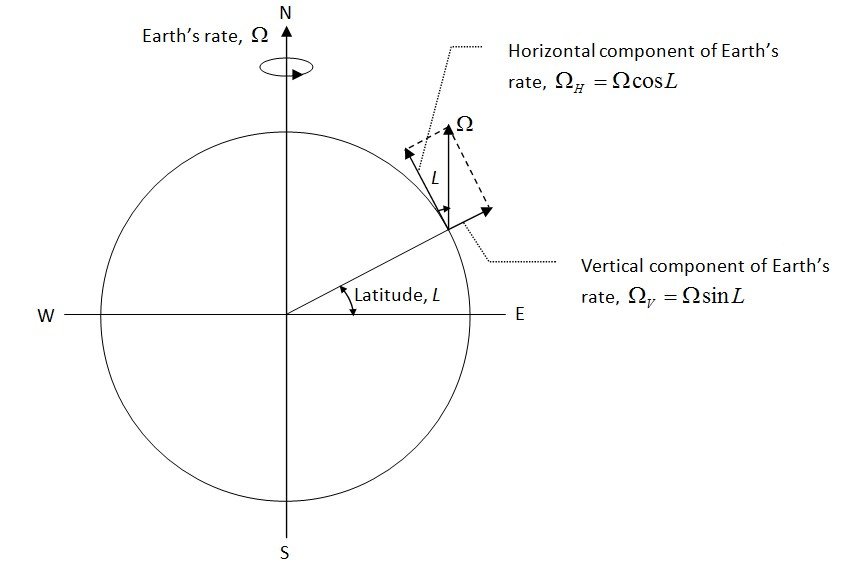The Earth rotates about its polar (north-south) axis in 24 hours, rotating from West to East at a rate of approximately 15 degree/hour. The duration of a solar day is 24 hours, the time taken for an Earth fixed object to point directly at the Sun. The time taken for the Earth to rotate to the same orientation in space, known as the Sidereal day, is 23 hours 56 min 4.1 seconds. The Earth rotates through one geometric revolution each Sidereal day, not in 24 hours, which accounts for the slightly strange value of Earth’s rate; 15.041067 degree/hour.
Any point on the Earth’s surface is moving in a circular arc because the Earth is spinning on its axis at this rate. The direction of the spin vector at any point on the Earth is parallel to the axis of rotation, i.e. the Earth’s polar axis defined by the geographic North and South poles.
At any point on the Earth’s surface, the Earth rate can be resolved into horizontal and vertical components as illustrated below.

The horizontal component of Earth’s rate always points towards the geographic North Pole and defines a reference direction to which the orientation of the survey tool can be measured using a gyroscope.


Post your comment on this topic.